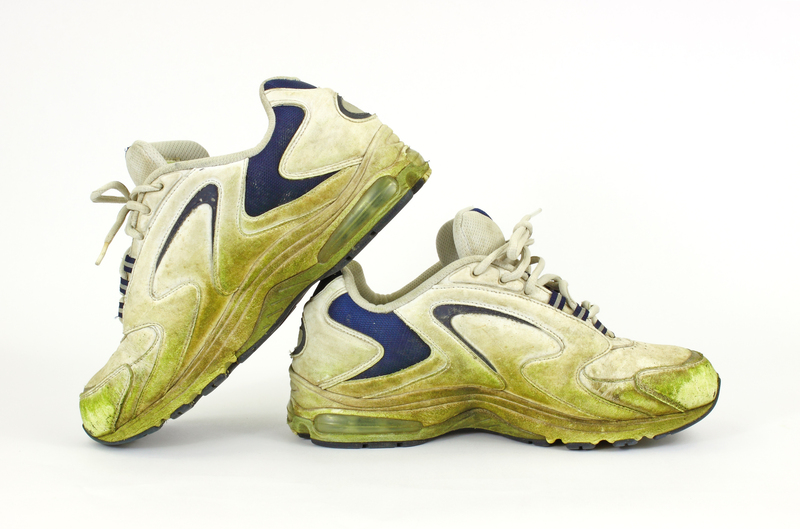Explore Innovative Cleaning Hacks for Burnt-on Stovetop Disasters
Posted on 27/06/2025
Explore Innovative Cleaning Hacks for Burnt-on Stovetop Disasters
Your kitchen stovetop is at the heart of home-cooked meals. However, with great recipes come inevitable spills, splatters, and those notorious burnt-on messes that seem nearly impossible to remove. If you're tired of scrubbing for hours with minimal progress, it's time to explore innovative stovetop cleaning hacks that will revolutionize the way you tackle stuck-on disasters.

Understanding Burnt-on Stovetop Messes
Before diving into cleaning tips, it's important to understand what makes these burnt-on residues so stubborn. Stovetops, especially after heavy-duty cooking, accumulate a combination of grease, sugary sauces, and food particles--elements that easily carbonize at high heat. Over time, these layers create tough, stubborn marks that regular cleaning sprays can't budge.
Common Challenges with Burnt Stovetops
- Grease buildup: Fats that splatter and harden, sometimes turning sticky or plasticky.
- Sugar burns: Sauces containing sugar caramelize and become glassy and tough.
- Cooked-on spills: Food particles overheating, drying, and clinging onto the nook and corners of your stovetop.
- Damage risks: Using the wrong tools or aggressive cleaners can damage your stove's surface or strip enameling.
Fortunately, there are smart, innovative ways to deal with these messes, saving you time and safeguarding your appliance. Let's dive into the best hacks to restore your stovetop's shine!
Innovative Cleaning Hacks for Burnt-on Stovetops
1. Baking Soda Paste Power
Baking soda is a time-tested, eco-friendly cleaning hero. Its mild abrasive property makes it perfect for scouring burnt-on food without scratching.
- Mix a paste: Combine 3 tablespoons of baking soda with a small amount of water.
- Apply generously: Spread the paste over burnt spots and let it sit for at least 15-30 minutes, or up to a few hours for stubborn marks.
- Wipe and scrub: Use a soft damp cloth or sponge to gently scrub, lifting the grime as you go.
- Rinse: Wipe away any residue for a sparkling finish.
This simple hack works wonders thanks to the fizzing action that gently loosens burnt layers.
2. Vinegar and Baking Soda Stovetop Cleaning Solution
Combine the cleaning power of white vinegar and baking soda for an even stronger effect. The two ingredients react, breaking down grease and charred leftovers.
- Sprinkle baking soda generously over the stained stove area.
- Spray or pour white vinegar onto the baking soda layer, watching it bubble and fizz.
- Let the mixture sit for 10-20 minutes.
- Wipe or scrub away with a soft sponge, rinsing afterward.
For glass stovetops, this hack is particularly effective and safe.
3. Steam Cleaning with a Hot Towel
Maybe you've heard of steam cleaning, but did you know you can use your kitchen towel for the purpose?
- Soak a hand towel in hot water (careful: wear kitchen gloves to avoid burns).
- Lay it flat over the burnt spots on the stovetop.
- Let it sit for 15-20 minutes; the steam will help soften tough grime.
- Wipe clean with the same towel, then buff dry with a microfibre cloth.
This gentle method loosens stubborn food without harsh chemicals or scratching sensitive surfaces.
4. Razor Blade or Scraper for Glass Cooktops
For glass or ceramic cooktops, use a razor blade or specialty cooktop scraper. This must be done with care to avoid scratching:
- Hold the blade at a 45-degree angle against the stovetop.
- Gently scrape under the burnt residue, pushing away from your body.
- Wipe with a damp microfiber cloth.
Never use this technique on non-glass surfaces!
5. Magic Eraser Miracle
Try a cleaning sponge such as a Magic Eraser for tackling tough marks on enamel or any non-delicate area.
- Dampen the eraser and squeeze out excess water.
- Scrub the stained area in a circular motion.
- Rinse well and wipe dry.
This method is highly effective for streaks, smears, and slight discolorations left after heavy burns.
6. Lemon Power for Natural Degreasing
Lemon's natural acidity makes it a gentle degreaser and a fresh-smelling solution for burnt-on stovetop disasters.
- Cut a lemon in half and rub it directly onto the burnt patches.
- Allow the juice to sit and work for 10 minutes.
- Wipe clean with a damp cloth for a citrusy shine.
This also helps eliminate lingering burnt-food odors from your kitchen space.
Unconventional Cleaning Tricks
Let's explore more innovative cleaning hacks beyond the basics for those ultra-stubborn or neglected messes.
7. Dishwasher Tablet Hack
- Soak a standard dishwasher tablet in warm water for a few minutes.
- Use it (wearing gloves) to scrub directly on burnt-on areas.
- The tablet's concentrated degreasing agents break down even the hardest residues.
- Wipe the area clean and enjoy a restored stovetop.
This hack is particularly useful for older, burnt stains that seem immune to regular scrubbing.
8. Hydrogen Peroxide and Baking Soda Mix
For deep, persistent char, hydrogen peroxide offers extra oxidizing power.
- Sprinkle a thick coat of baking soda over the mess.
- Pour or spray hydrogen peroxide evenly over the top to create a paste.
- Let this mixture sit for 15-30 minutes.
- Wipe and rinse thoroughly.
This powerful duo can tackle even several sessions of burnt-on grease and food.
9. Activated Charcoal Paste
Activated charcoal isn't just for detox drinks--it's also a potent cleaning secret for burnt stovetops!
- Mix activated charcoal powder with a little water until it forms a dense spread.
- Apply over stains, let sit for 20-30 minutes.
- Wipe with a wet sponge and finish by rinsing well.
This unique hack absorbs odors and stains simultaneously.
10. Commercial Stove Cleaner Sprays
When home remedies aren't enough, commercial stovetop cleaners can be your last-resort weapon. Choose formulas specifically marked as safe for your stove's make and material.
- Spray on according to the manufacturer's instructions.
- Let the product sit for the recommended time.
- Wipe with a soft cloth and rinse thoroughly.
Always ventilate the space well and follow all safety precautions when using chemical cleaners.
Innovative Preventive Measures for a Burnt-Free Stovetop
While these cleaning hacks are wonderful, the best "hack" is preventing burnt-on disasters in the first place. Here's how to keep your stovetop in pristine condition:
- Covers and Splatter Guards: Use them when cooking sauces or frying to catch splashes before they reach the stovetop.
- Immediate Cleanup: Wipe up spills as soon as your stove cools to prevent setting.
- Monthly Deep Cleans: Don't wait until you see buildup--routine maintenance helps.
- Cookware Check: Use flat-bottomed and clean pots/pans to avoid uneven heating and hot spots.
- Seasonal Stove Disassembly: Once a season, remove grates and knobs for a thorough wash.
An ounce of prevention saves hours of scrubbing!
Expert Tips for Maintaining a Clean & Sparkling Stovetop
- Choose the right tools: Microfiber cloths, soft sponges, and non-abrasive pads protect delicate finishes.
- Test cleaners first: Apply a small amount to a hidden spot to ensure your stovetop's surface tolerance.
- Regular wipe-downs: After each cooking session, a quick wipe helps prevent buildup.
- Follow manufacturer's care guides: Each stovetop material--enamel, glass, or stainless steel--has unique care requirements.
- Avoid harsh chemicals or metal scouring pads: These can scratch and degrade surfaces.

Frequently Asked Questions About Burnt-on Stovetop Cleaning
Q: How do you remove burnt milk from a glass top stove?
Use a baking soda and vinegar paste and let it sit for 15-30 minutes. Gently scrape with a plastic spatula, then wipe with a soft, damp cloth.
Q: What's the best solution for a stainless steel stove?
Avoid anything overly abrasive; opt for baking soda and water paste or a mild commercial stainless steel cleaner, then buff with a microfibre cloth.
Q: Is it safe to use bleach on stovetops?
Generally, bleach is not recommended on stovetops, as it may corrode surfaces and is dangerous upon contact with food prep areas.
Final Thoughts: Restoring Your Stovetop's Shine Has Never Been Easier
Don't let burnt-on stovetop disasters ruin your kitchen vibe or cause endless hours of strenuous cleaning. With these innovative stovetop cleaning hacks, you can tackle any mess--big or small--in an eco-friendly, safe, and highly effective way. Simply stock your pantry with baking soda, vinegar, lemons, and a microfiber cloth or two. With a little know-how, your stovetop will always look as spotless as your culinary creations are delicious.
Next time you face a burnt-on cooking spill, revisit these innovative cleaning methods and rescue your stove with confidence!
- Share your own stovetop cleaning tips in the comments below and keep the kitchen wisdom flowing!



